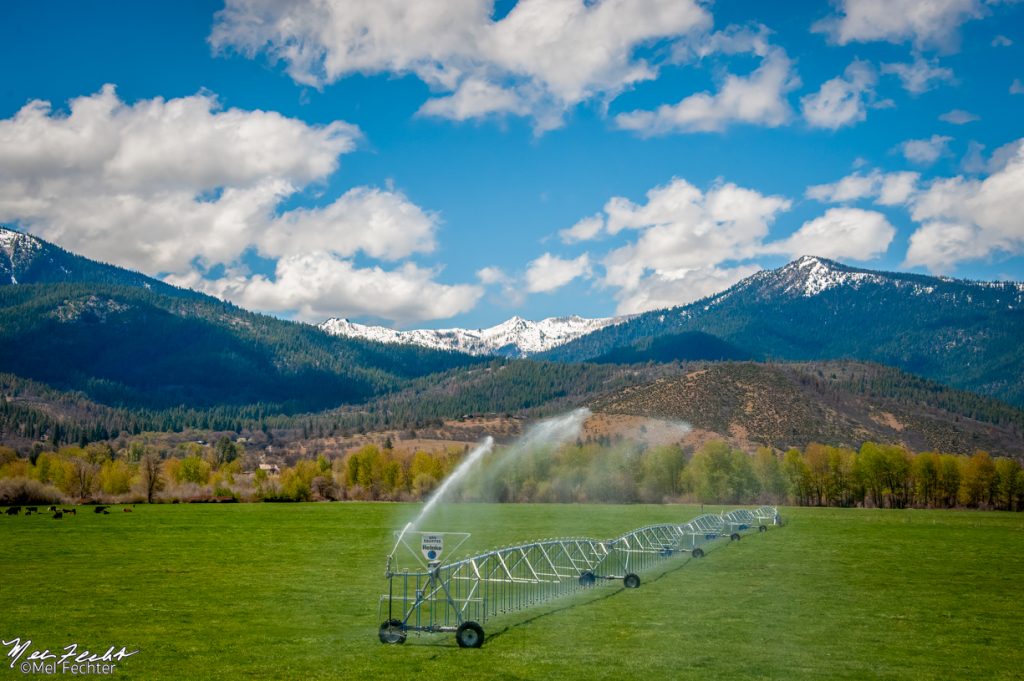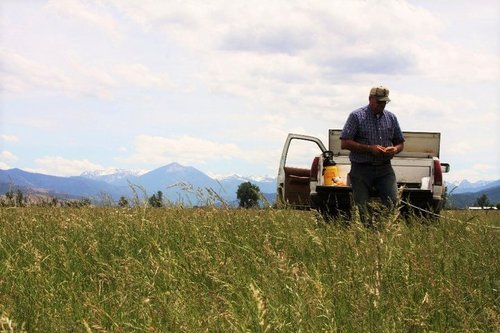—With drought over, family farmers and ranchers ask that local solutions replace State’s 30% groundwater cuts
Siskiyou County, CA (May 23, 2023)—Today, residents of Scott Valley, a small rural community in far- northern California, sent a letter to Governor Gavin Newsom requesting that he rescind his 2021 drought proclamation for their area of the Klamath River basin. Now that drought has subsided in the area, locals are asking that the corresponding emergency drought regulations be lifted to prevent further damage to the area’s agriculture-based economy. The letter was signed by about 400 people, including members of the Shasta, Karuk, Yurok, and Pitt tribes, teachers, business owners, residents, and small family farmers and ranchers.

This past winter brought considerable relief in the form of rain and snow to the Scott River watershed, after three years of severe drought that prompted significant surface and ground water restrictions for the small family farms and ranches in the area. As of May 1st, he surrounding mountains had a 159% snowpack, and the runoff forecast is 178% through July. The U.S. Drought Monitor officially removed the “drought” designation for the area on May 11.

A May 9, 2023 photo demonstrating the ample water and snowpack in Scott Valley
Yet despite this good water year, Scott Valley farmers and ranchers are, like last year, facing 30 percent reductions in groundwater use and possible limits on livestock water intake. The drought regulation is being enforced by the State Water Resources Control Board, with emergency authority provided by the Governor’s lingering 2021 executive order.
“Small family farms and ranches, like most businesses, cannot sustain a 30 percent loss of a critical input for multiple years in a row,” the letter reads, noting that no financial compensation was given for the required reduction in water use. “Sustainable agricultural production is the lifeblood of our economy and community and also supports significant co-benefits for wildlife through our thriving working landscapes.”

The letter emphasizes that, while Scott Valley’s groundwater basin is not overdrafted, locals are nonetheless committed to permanent water conservation, and mindful of the need to protect their aquifer and fish populations.
“There will be dry years again,” the residents say. “We believe we can work together to find local solutions for our aquifer, streamflows, fisheries, and agriculture-based economy.”
In recent years, Scott Valley landowners have been coordinating with state agencies and UC Davis researchers in efforts to do winter groundwater recharge for the purpose of augmenting late-summer flows in the Scott River. The aim is to benefit native salmon and steelhead populations. Locals call this
unique effort “Environmental managed aquifer recharge,” or “Enviro-MAR.” Unfortunately, the Water Board’s emergency regulation has made Enviro-MAR difficult to achieve.
But residents are hopeful that, with the easing of the drought conditions and a growing spirit of collaboration, solutions can be found that allow for more Enviro-MAR and that strike a balance between agricultural water use and environmental needs.
A recent summertime photo of Tom Hayden, local rancher and conservationist.

“In recent days, a promising new local collaboration has been forming amongst agriculture, tribes, fish advocates, and state agencies,” the letter says. The Valley hopes to find solutions that “take into consideration specific needs of fish in their various life stages; the water year type; timing and location of water use; [and] individual producers’ current level of irrigation efficiency.”
The letter points to past locally-driven conservation successes. One such achievement has been a significant increase in native Coho salmon for the Scott River. Also, Scott Valley farmers have made permanent improvements in irrigation efficiencies in recent years, and want to expand those water- saving methods going forward.
“We are family, friends, and neighbors standing together in support of Scott Valley’s small, multi- generational farms and ranches,” the letter concludes, “because agriculture supports the rural community we love and want to hand down to our children.”
Avery Theatre CDF&W CHSRA Copco Dunsmuir Dunsmuir Elementary Dunsmuir Wildcats Easter Egg Hunt Etna EtnaCa FERC Forest Service Irongate Iron Gate Junior High Rodeo KCOC klamath Klamath Dams Klamath National Forest klamath river Klamath River Dams KNF KRRC Main Street Homestead McCloud Montague Mount Shasta Mt Shasta obituary Rodeo Salmon Scott River Scott Valley Scott Valley Agriculture Water Alliance Siskiyou Siskiyou Art Museum Siskiyou County Siskiyou County Board of Supervisors Siskiyou District Attorney Office Siskiyou Golden Fair The Well USDA KNF weedca YPD Yreka
- CalFire PR: BURN PERMITS REQUIRED May 1, 2024
- Wildfire Season Is Almost Here! Can One State’s Problem Be Another State’s Solution?
- EPA conducted Rotenone experiments on Klamath Basin?
- The Klamath River September 2002 Fish Die-off : Older Fish from Trinity River Hatchery Affected
- Where did the Sockeye Go From The Klamath ?? Will they return without the dams ?






With this great story being posted ,I have something to add to ALL Scott Valley Ranchers and Farmers. As well as the Farm bureau, and people the water users of Siskiyou county. I would like the attention of the Scott Valley people to let them all know there is illegal water diversions coming off our property to another two families properties. Neither family have a water right given or grandfathered much less documented.